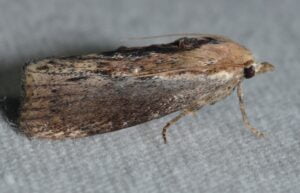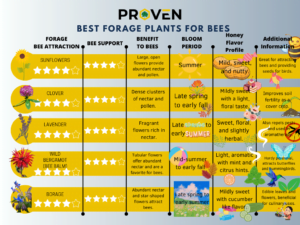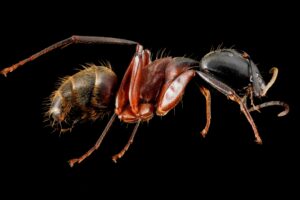Managing hive beetles is a critical aspect of beekeeping that can significantly impact the health and productivity of your bee colonies. Hive beetles are a common pest that can cause extensive damage if not properly controlled. This article will explore 12 effective tips for hive beetle control, helping you maintain a healthy apiary. By implementing these beekeeping tips, you can ensure your hives remain strong and productive, keeping hive beetles at bay and protecting your investment in beekeeping supplies.

Table of Contents
What Are Hive Beetles?
Hive beetles, specifically the small hive beetle (Aethina tumida), are a significant pest in beekeeping, capable of causing extensive damage to bee colonies if not properly managed. Originating from sub-Saharan Africa, they have spread to various parts of the world, including North America, Australia, and Europe, posing a threat to beekeepers globally.
Appearance and Life Cycle
- Adult Beetles: Adult hive beetles are small, oval-shaped insects, typically measuring about 5-7 millimeters in length. They are dark brown to black in color and have a hard, shiny exoskeleton. Their compact size allows them to infiltrate beehives easily and hide in small crevices.
- Eggs and Larvae: Female hive beetles lay their eggs in cracks and crevices within the hive. The eggs are small, white, and difficult to detect. Once hatched, the larvae, which are white or cream-colored and resemble tiny worms, begin feeding on hive resources. Larvae can grow up to 11 millimeters in length.
- Pupation: After feeding for about 10-14 days, larvae leave the hive and burrow into the soil near the hive to pupate. The pupation stage lasts several weeks, after which adult beetles emerge and seek out new hives to infest.
Behavior and Impact
- Feeding Habits: Hive beetles are scavengers that feed on a variety of hive materials, including honey, pollen, wax, and bee brood. Their feeding activity can cause significant damage to the hive’s structure and resources, leading to the destruction of comb and contamination of honey.
- Damage to Colonies: Infested hives suffer from weakened colony health due to the destruction of brood and food stores. In severe infestations, the presence of hive beetles can cause bees to abandon the hive, leading to colony collapse. Beetle larvae can also create a fermented, slimy mess known as “slime” in the hive, further damaging hive components and making honey unsuitable for consumption.
- Spread of Disease: Hive beetles can act as vectors for various pathogens, potentially introducing diseases to the bee colony. Their presence in the hive can exacerbate existing health issues and stress the bee population.
Detection and Signs of Infestation
- Visual Inspection: Regular hive inspections are essential for detecting hive beetles. Look for adult beetles scurrying across the comb and hiding in corners, crevices, or under debris.
- Larvae Presence: The presence of larvae in the hive is a clear sign of infestation. Check the brood frames and hive floor for small, white larvae that may be feeding on hive resources.
- Damage to Comb and Honey: Signs of hive beetle damage include chewed comb, slimy or fermented honey, and a foul odor emanating from the hive. These indicators suggest beetle activity and the need for immediate intervention.
Hive Beetle Management and Prevention Tips
1. Maintain Strong Bee Colonies
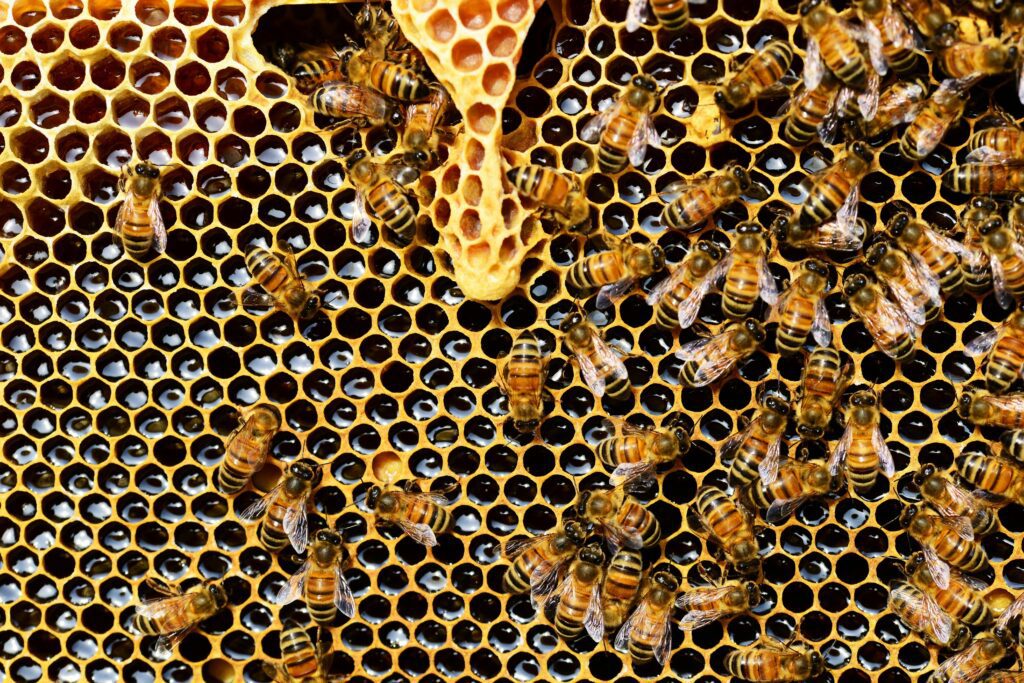
- Why Strong Colonies Matter
- Strong colonies are better equipped to defend against hive beetles, reducing the chances of infestation. Healthy, populous hives can effectively manage and expel small hive beetles before they become a significant problem.
- Ensuring Colony Health
- Regularly monitor and manage your bee colonies for diseases and parasites. Provide adequate nutrition and proper ventilation to support colony strength and resilience.
2. Use Beetle Traps
- Types of Beetle Traps
- There are various types of beetle traps available for controlling hive beetles, including oil traps, beetle blasters, and screened bottom boards. These traps capture and kill hive beetles, reducing their population within the hive.
- Oil Traps
- How They Work: Oil traps are designed to attract hive beetles with bait and then trap them in oil, which prevents them from escaping. The oil effectively kills the beetles by drowning them, providing a simple and non-toxic method for beetle control.
- Placement and Maintenance: These traps are typically placed on the bottom boards or inside the hive where beetles are known to congregate. Regularly check and refill the traps with oil to ensure they remain effective.
- Advantages: Oil traps are an inexpensive and easy-to-use option for reducing hive beetle populations. They require minimal maintenance and can be used alongside other control methods for comprehensive pest management.
- Beetle Blasters
- Functionality: Beetle blasters are small plastic traps that fit between the frames in a beehive. They are filled with a non-toxic attractant, such as cider vinegar, which lures beetles into the trap where they are unable to escape.
- Installation and Use: To use beetle blasters, simply place them between the frames in the hive. Regularly inspect the traps and empty them as needed to keep them effective.
- Benefits: Beetle blasters are easy to install and use, providing a targeted approach to catching hive beetles. They help keep beetle populations under control without harming the bees or contaminating honey.
- Screened Bottom Boards
- Design and Purpose: Screened bottom boards are hive bases with a mesh screen that allows small debris and pests, like hive beetles, to fall through while keeping the bees inside the hive. This design improves hive ventilation and reduces moisture levels, creating an unfavorable environment for beetles.
- Installation and Maintenance: Installing screened bottom boards involves replacing the solid bottom board of the hive with the screened version. Regular cleaning and inspection are necessary to remove debris and ensure proper function.
- Advantages: Screened bottom boards offer dual benefits of improved ventilation and pest control. They help reduce the presence of hive beetles and other pests, contributing to overall hive health and stability.
- Oil Traps
- There are various types of beetle traps available for controlling hive beetles, including oil traps, beetle blasters, and screened bottom boards. These traps capture and kill hive beetles, reducing their population within the hive.
- Placement and Maintenance
- Place beetle traps in strategic locations within the hive to maximize their effectiveness. Regularly check and clean the traps to ensure they are functioning properly and effectively reducing beetle numbers.
3. Implement Proper Hive Placement
- Optimal Location
- Position your hives in sunny, well-drained areas to discourage hive beetles, which prefer dark, moist environments. Elevated hive stands can also help reduce beetle infestations by making it harder for beetles to access the hives.
- Environmental Considerations
- Avoid placing hives near wooded areas or heavy vegetation where beetles can easily hide. Ensure good air circulation around the hives to keep the environment dry and less favorable for beetles.
4. Regular Hive Inspections
- Frequency of Inspections
- Conduct regular hive inspections to identify and address any signs of hive beetle presence early on. Frequent checks allow you to take prompt action, preventing small problems from becoming large infestations.
- What to Look For
- During inspections, look for adult beetles, larvae, and beetle eggs in the hive. Check the bottom boards, inner covers, and corners of the hive where beetles are likely to hide.
5. Maintain Clean Hives
- Cleaning Practices
- Keep hives clean and free of debris, which can provide hiding places for hive beetles. Remove any dead bees, excess propolis, and wax scraps that could attract beetles and other pests.
- Hygiene and Maintenance
- Regularly clean and sanitize beekeeping equipment, including frames and hive tools, to prevent the spread of beetles and other pathogens. Maintaining a clean hive environment supports overall colony health.
6. Control Moisture Levels
- Importance of Dry Hives
- Hive beetles thrive in moist environments, so it’s crucial to control moisture levels within the hive. Ensure proper ventilation to reduce humidity and keep the hive interior dry.
- Ventilation Strategies
- Use screened bottom boards and provide adequate ventilation openings to promote airflow. Avoid overfeeding bees with syrup, which can increase moisture levels in the hive.
7. Use Diatomaceous Earth
- Application of Diatomaceous Earth
- Diatomaceous earth (DE) can be sprinkled around the hive entrance and in beetle traps. DE is a natural, non-toxic powder that kills beetles by dehydrating them.
- Safety and Effectiveness
- When using DE, ensure it does not come into direct contact with bees. Apply DE cautiously and monitor its effectiveness, reapplying as necessary to maintain beetle control.
8. Employ Beneficial Nematodes
- Role of Beneficial Nematodes
- Beneficial nematodes can be introduced to the soil around the hive to target and kill hive beetle larvae. These microscopic organisms are natural predators of beetles and can help reduce their population.
- Application and Monitoring
- Apply nematodes to the soil according to manufacturer instructions, typically during cooler times of the day. Monitor the effectiveness of nematode treatments and reapply as needed to maintain beetle control.
9. Rotate Hive Locations
- Benefits of Hive Rotation
- Rotating hive locations periodically can disrupt the life cycle of hive beetles. Moving hives to new locations makes it harder for beetles to find and reinfest them.
- Best Practices for Rotation
- Plan hive rotations to coincide with major beekeeping activities, such as honey harvesting or seasonal inspections. Ensure new hive locations provide optimal conditions for bee health and productivity.
10. Use Chemical Treatments Sparingly
- Types of Chemical Treatments
- Chemical treatments, such as permethrin or coumaphos, can be used to control hive beetles. These treatments should be used sparingly and as a last resort, due to potential risks to bees and hive products.
- Safe Application
- Follow all manufacturer guidelines and safety precautions when applying chemical treatments. Ensure treatments do not contaminate honey or wax and minimize exposure to bees.
11. Monitor for Signs of Reinfestation
12-Month Beekeeping Schedule: Essential Roadmap to Success
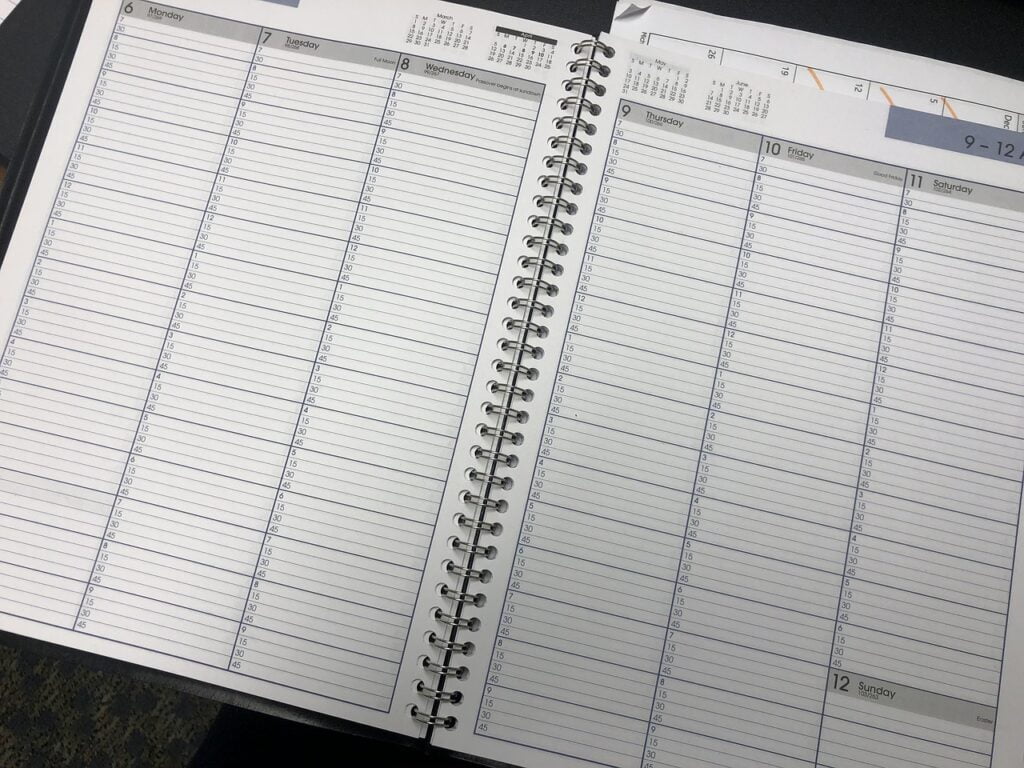
- Ongoing Monitoring
- Continuously monitor hives for signs of reinfestation, even after successful beetle control. Regular checks help detect any new beetle activity early, allowing prompt intervention.
- Proactive Measures
- Implement proactive measures, such as maintaining strong colonies and using beetle traps, to prevent reinfestation. Consistent vigilance is key to long-term beetle management.
12. Educate and Collaborate with Other Beekeepers
- Knowledge Sharing
- Educate yourself and collaborate with other beekeepers to share knowledge and experiences about hive beetle management. Learning from others’ successes and challenges can enhance your beetle control strategies.
- Community Efforts
- Participate in local beekeeping associations and workshops to stay informed about new methods and technologies for hive beetle control. Collective efforts can help reduce beetle populations in your area.
Summary
Effectively managing hive beetles is crucial for maintaining a healthy and productive apiary. By implementing these hive beetle control strategies, beekeepers can significantly reduce the impact of these pests. Regular hive inspections, maintaining strong colonies, and using appropriate beekeeping supplies are essential practices.
Additionally, employing tools like beetle traps and diatomaceous earth, along with ensuring proper hive placement and hygiene, can greatly enhance your apiary management. By following these beekeeping tips, you can protect your bees and ensure the long-term success of your beekeeping efforts.
Other Resources
For more information on managing pests and enhancing your beekeeping practices, check out these helpful articles:
8 Common Beehive Pests and Effective Prevention Tips for Beekeepers
Learn about various pests that can affect your beehives and discover effective prevention tips to protect your apiary. This article covers essential strategies to keep your colonies healthy and thriving.
10 Essential Honey Bee Supplies Every Beekeeper Needs
Ensure you have all the necessary beekeeping supplies to support your beekeeping efforts. From hive tools to protective gear, this guide highlights the must-have items for successful apiary management.
Small Hive Beetles
Dive deeper into understanding small hive beetles, a common pest that can wreak havoc on your beehives. This article provides detailed information on identifying, managing, and preventing hive beetle infestations, complementing the hive beetle control tips discussed in this article.
Conclusion
In conclusion, effective hive beetle control is essential for successful apiary management. By following the 12 tips outlined in this article, you can significantly reduce the risk of hive beetle infestations and protect your bee colonies. Remember, maintaining strong colonies, using the right beekeeping supplies, and staying vigilant are key to keeping hive beetles under control. By incorporating these beekeeping tips into your routine, you can enjoy a thriving, productive apiary.

